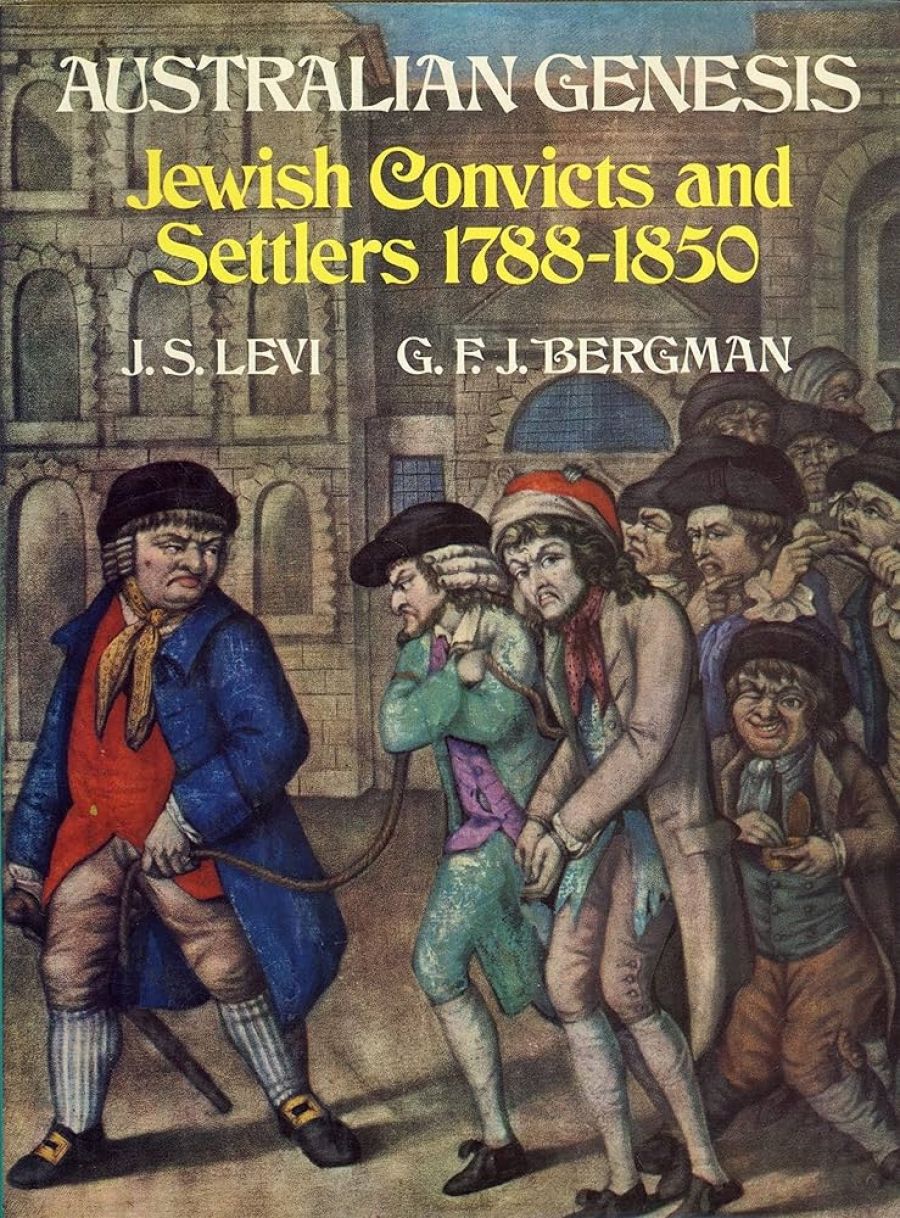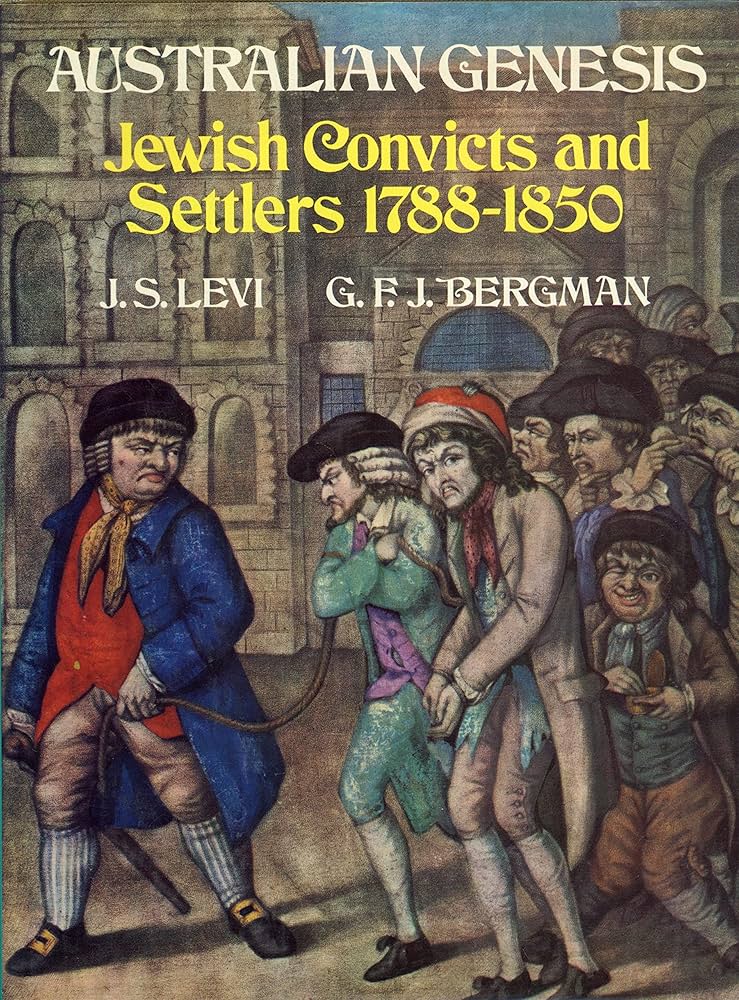
- Free Article: No
- Contents Category: Religion
- Review Article: Yes
- Article Title: No Rabbi, No Standards
- Online Only: No
- Custom Highlight Text:
Rabbi Emeritus John Levi, the author of this revised edition, is one of the notable Australians of his generation. The first Australian to be ordained a rabbi, he served Temple Beth Israel in Melbourne from 1960 to 1997. He was founder and past-president of the Council of Christians and Jews, a member of the governing body of the World Union for Progressive Judaism, President of the World Conference on Religion and Peace, an acclaimed scholar, holder of advanced degrees, including a Doctor of Divinity from Hebrew Union College, and is a Member of the Order of Australia. Levi also has a passion for history – for documenting in the most meticulous detail the first Jewish communities of Australia. It comes as no surprise that he has deep roots in this land. His great-great-grandfather helped to arrange the first Jewish services in Melbourne in 1839; his great-grandfather, Nathaniel Levi, was the first Jew to be elected to the Victorian parliament, in 1860.
- Book 1 Title: Australian Genesis
- Book 1 Subtitle: Jewish Convicts and Settlers, 1788–1860
- Book 1 Biblio: MUP, $89.95 hb, 385 pp
- Book 1 Cover Small (400 x 600):

- Book 1 Cover (800 x 1200):

The pioneering Australian Genesis, co-authored with George Bergman and first published in 1974, has been long out of print. The second edition, solely the responsibility of John Levi following the death of Dr Bergman and now published by Melbourne University Press, adopts the structure of the first, with some reordering of sequence. It incorporates additional research, stylistic rewriting and a short concluding chapter, which takes the narrative from 1851 to 1860. Indicative of the book’s lack of concern for direct analysis, the reader is left without adequate explanation of changes between the two editions.
Jews formed a continuous presence in the Australian colonies from the outset of European settlement. Of the 759 convicts on the First Fleet, thirteen, possibly fourteen, were Jews. Levi asserts that Australia became ‘the only community of European people in which Jews were present from the moment of its establishment’. By 1838, 400 Jewish convicts had been transported, with another 300 arriving over the next fifteen years. Most were from the small London community, sentenced for crimes of stealing. There were also fifty free Jewish settlers in 1838. The substantial increase in free migration saw the Jewish population reach 1900 late in 1851 and increase almost threefold during the gold rushes. In Victoria, the population grew from 364 to 2903 over the course of the 1850s. Australian Jews comprised 0.5% of the total population, a proportion that has been maintained to the present day, with variation mostly within the 0.4–0.6% range, a remarkable constancy.
More than 700 names are recorded in the index, which runs to twenty-three pages. They include noted First Fleeters, Esther Abrahams and John Harris, whose children and grandchildren would rank amongst the highest; Joseph Samuel, ‘the man they couldn’t hang’; Israel Chapman, Australia’s first detective; Solomon Levey, spurned financial backer of the Swan River settlement; and Edward Davis, the ‘Jewboy bushranger’. Among the notable entrepreneurs, Barnett Levey is regarded as the father of Australian theatre. Levey lost a fortune erecting a Sydney building that was a combined warehouse, theatre, hotel, and a wind-driven mill. Had the windmill worked, the whole structure would have been endangered. The Sydney Times commented: ‘the theatre and the windmill were in one respect alike; they were both useless.’
The establishment of Jewish institutions was not easily achieved. Levi observes that ‘old Jewish religious and family loyalties were erased by the pressures of penal life, the struggle for existence precluded the development of a Jewish community, and the rigid colonial hierarchy had no place for religious dissent’. There was little opportunity for marriage within the faith due to the small number of Jewish women: less than thirty amongst the transportees to 1838. By the early 1840s Sydney had a synagogue but ‘no rabbi, no teacher and no standards’, and Jews remained ‘myopically unaware of changes being wrought in Europe as Judaism, both orthodox and liberal, faced the challenge of emancipation’.
While the milestones of Jewish life are recorded, and, while there is analytical discussion in part, the main focus is biographical. On display is an encyclopaedic knowledge of sources, read with a learned insider’s knowledge of religious practice and tradition. But the book lacks critical reflection and scrutiny of evidence. A chapter of over 10,000 words on ‘Ikey Solomon’, possibly the inspiration for Dickens’s Fagin, draws heavily on newspaper reports and pamphlets whose reliability could well have been questioned. There is no overt discussion of problems of interpretation, no comparative reference to other Jewish communities of the New World to inform understanding of the distinctive elements of the Australian experience. In keeping with a traditional approach to recording the early history of European settlement, there is little feeling for the Aboriginal people of this land.
Readers of this book will learn much of the minutiae of individual lives. Not infrequently, the accumulation of detail assumes epic proportions, but Levi is an accomplished stylist and rarely loses the reader’s attention. The publisher’s claim that the book ‘reads like a thriller’ is no overstatement. This handsomely designed edition, incorporating eighteen pages of colour plates and ninety-two text illustrations, creditably serves this labour of love.


Comments powered by CComment